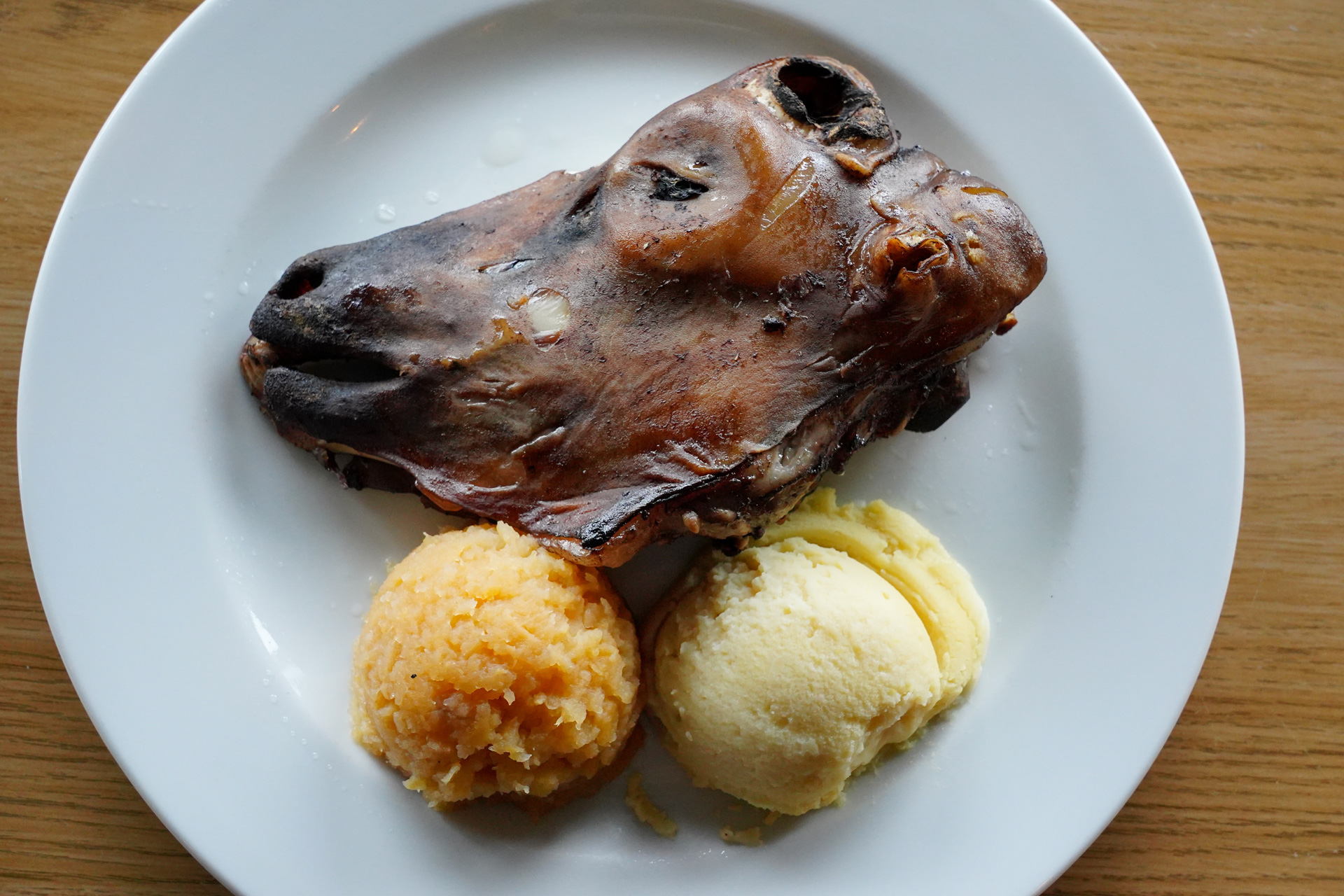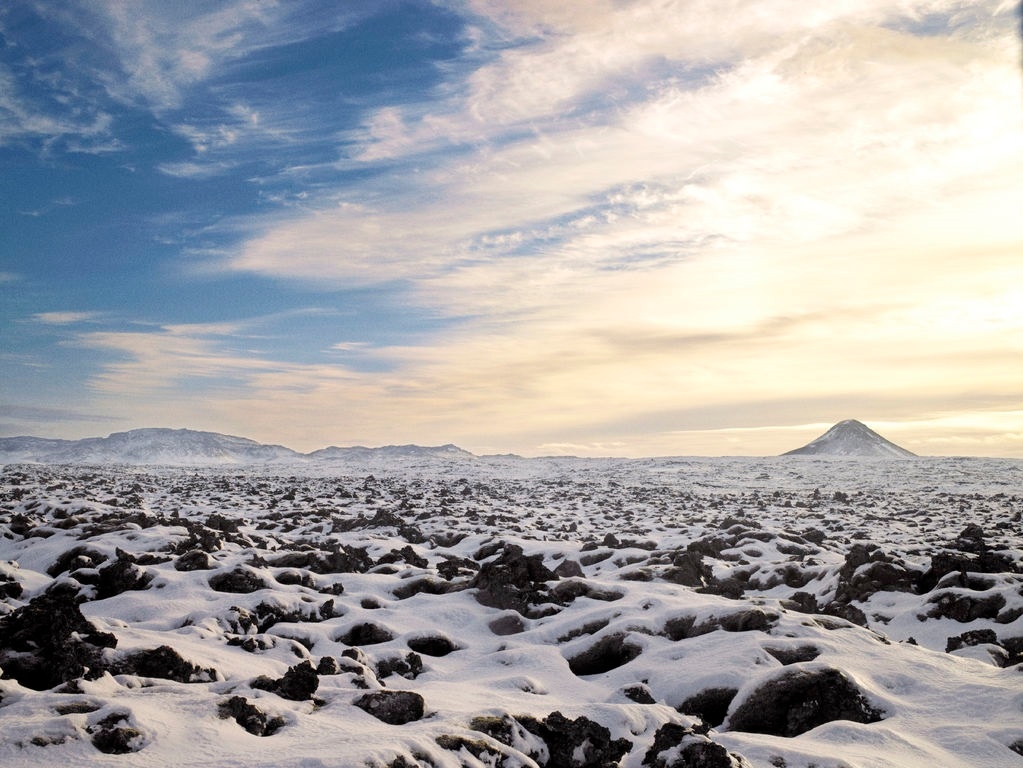Þorrablót: The midwinter feast
During the old Norse month of Þorri, which runs from late January to late February, Icelanders toast to the old gods with a midwinter feast known as þorrablót. The weird and wonderful food savored at þorrablót parties is called þorramatur (literally, 'Þorri's food') and it stars an array of preserved fare, delicious and, er, not-so-delicious.
The month of Þorri is bookmarked by two special days of celebration: Bóndadagur, or Men’s Day, occurring on the first day of the month, and Konudagur, or Women’s Day, which marks the beginning of the following month of the old winter calendar.
A feast of strange Icelandic food
Outside of Iceland, the midwinter þorrablót feast has become renowned for the unusual food that takes center stage, heavy on smoked, salted, dried, pickled, and fermented meats. Tales of party-going Icelanders chowing down on fermented shark, rams' testicles and sheep's head are met with disbelief and plenty of curiosity.
We can confirm the stories of Iceland's unusual foods are true. (We also want to reassure you that there is plenty of 'normal' food in Iceland, too!) Read on for an insight into the weird and wonderful menu, and the history of the feast.
(A note on the Icelandic language: the letter Þ / þ makes a 'th' sound. You may also see þorrablót written as thorrablot.)
The Icelandic calendar
There's a fascinating history behind þorrablót and its connection to two charming days in the Icelandic calendar:
- Bóndadagur (Men's Day), which begins the season of Þorri
- Konudagur (Women's Day), which ushers in the new season of Góa
These are days for women to pamper the men in their lives, and vice versa. The sentiments are similar to Valentine's Day, and flowers are often given.
| 2024 | 2025 | 2026 | |
|---|---|---|---|
| Bóndadagur – Men's Day | January 26 | January 24 | January 23 |
| Konudagur – Women's Day | February 25 | February 23 | February 22 |
The þorrablót menu
Icelandic favorites like hangikjöt (smoked lamb), harðfiskur (dried fish) and rúgbrauð (dark, sweet rye bread) share the buffet with treats that are more of an acquired taste:
- hákarl (fermented Greenland shark)
- hrútspungar (rams’ testicles)
- svið (singed sheep’s head: pictured below with traditional accompaniments of mashed potato and mashed beets)
- sviðasulta (pieces of svið pressed into a gelatinous loaf)
- hvalsrengi (whale blubber)
- blóðmör (blood pudding)
- lifrarpylsa (liver-suet sausage)
Brennivín (Icelandic schnapps) is the drink of choice to wash this all down.
Because this traditional food was meant to be eaten through late winter, much of it is tough or otherwise undesirable pieces of the animal that have been preserved in mysa (fermented whey). The mysa both preserves the food and breaks down the proteins, which tenderizes the meat and makes it more palatable. That said, don’t expect the refined flavors of roast chicken. We’re still talking about face meat and testicles here. Feeling hungry?

Where to try weird Icelandic food
If you happen to be in Iceland in the period of Þorri, look out for a þorrablót buffet and feast on such dishes as cured ram testicles, fermented shark and liver sausage to your heart’s content!
You can find þorrablót menus (or a taste of þorramatur-style food) at some traditional restaurants around the country, including Café Loki, Íslenski barinn, Fjárhúsið, Múlakaffi, and Þrír Frakkar in central Reykjavík. You can also find some of the treats in supermarket refrigerators.
![]()
Icelandic plate Loki, from Café Loki.
The origins of þorrablót
Due to its global position, Iceland experiences great transitions in weather through the seasons and alternates dramatically between darkness and daylight. We reach peak darkness on December 21 at the winter solstice, and from that date the sun is slowly clawing its way further up to the heavens, day by day.
You won’t be surprised to hear that the island’s seasons have colored the culture and folklore of its inhabitants. This includes the months of the calendar, arriving as they do systematically year after year, in parallel with the frost and darkness of winter and the warmth and green grass of summer.
The month of Þorri is the only remnant of the old Icelandic calendar whose name still resonates with modern Icelanders. In the old calendar, Þorri begins in the latter part of the period we now call January.
The word has an unclear origin, but is possibly connected with that of Þór (Thor), the Norse god. In tales from medieval times, Þorri is portrayed as a personification of winter: a mighty and powerful man, perhaps a king or chieftain, of hard and merciless character. Medieval sources also speak of þorrablót, with the word blót connoting a sacrificial and communal event.
A celebration of culture and countryside
There are stories of special celebrations at the beginning of Þorri as far back as the 18th century, although we don’t know for certain what these festivities involved. We do know that communal celebrations of poetry, hearty food and drink, under the name of þorrablót, became popular in the late 19th century, when romantic national sentiment was at its peak and provoked interest in those things that were perceived to be ancient and peculiar to Icelandic culture.
Another þorrablót revival of sorts happened in Reykjavík in the early to mid-20th century, when the population of Iceland’s rapidly growing capital started to long for the culture of the countryside where they had grown up, including its traditional food culture.
In the 1950s, an enterprising restaurateur came up with the idea of drawing in customers for the low season of January to April, by offering what was presented as traditional Icelandic food, calling it þorramatur (i.e. food of Þorri) in reference to the old calendar.
The menu included delicacies such as cured rolls of lamb flank and boiled and singed sheep's heads. The idea caught on in a major way and formed the basis for the modern celebration of þorrablót.
Men’s Day and Women’s Day
The month of Þorri is bookmarked by two special days of celebration: Bóndadagur, or Men’s Day, occurring on the first day of the month, and Konudagur, or Women’s Day, which marks the beginning of the following month of the old winter calendar: Góa.
Just like the month of Þorri was taken as the personification of winter, Góa has her own share of poetic characteristics. She has been given a variety of traits by different poets: she’s well-dressed and extremely tall, she takes care of the farm’s larder, she’s as old as Icelandic settlement, on occasions she’s even the mainspring of volcanic eruptions.
On both Men’s and Women’s Day, flowers are the main token of affection presented to the partner whose day of celebration has arrived, but general pampering and spoiling is also encouraged.
The custom of giving flowers is not a particularly old one, it only goes back a few decades. This is perhaps not surprising. Although generously endowed with mountain ranges, glaciers and black sands, Icelandic nature isn’t exactly suited for growing bouquet flowers, so greenhouses and modern imports are needed for a custom like this to take hold. The 20th century has made a mark on these celebrations, just like endless other facets of life. Few would now eat þorramatur outside the þorrablót season.
A link to the past
And so, these old winter celebrations survive to this day in Icelandic culture, although in a somewhat altered form. The enduring appeal of seasonal celebrations such as these no doubt comes largely from their role in breaking up the monotony of everyday existence, but they may originally also have served as landmarks on the path to a warmer and brighter future. A reminder that spring and summer were coming eventually, that one more post had been passed on the winter season’s long road of darkness, leading up to better times.
The history of Þorri and Góa gives insight into what life used to be like in Iceland – and where winter sustenance came from, when food sources were low. Sample it for a taste of earlier times.
